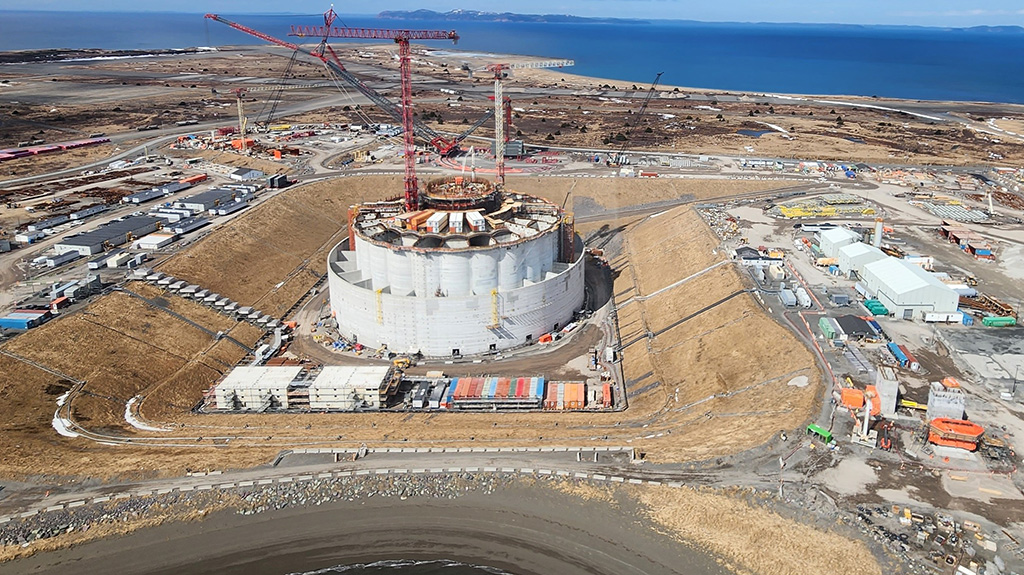OTTAWA — All four Atlantic provinces will experience periods of sustained growth through the next decade with occasional regional slumps, putting pressure on recruiters to step up efforts to boost the construction workforce during the next decade.
New Brunswick, P.E.I. and Nova Scotia will all experience shortfalls of carpenters at key periods in the next 10 years while Newfoundland and Labrador will be short pipefitters and electricians among other trades.
The findings are contained in BuildForce Canada’s 2023-2032 Construction and Maintenance Looking Forward reports for the four provinces, released April 24.
Regional highlights include:
Newfoundland and Labrador: demands to peak in 2029
BuildForce said strong activity in the province’s engineering-construction sector will drive construction and maintenance employment demands in Newfoundland and Labrador to a peak of nearly 16,000 workers in 2029, before they contract by as many as 940 workers (six per cent) below 2022 levels by 2032.
Continued increases in new-housing, institutional and engineering construction sectors drove employment higher in both the residential and non-residential sectors in 2022. Meanwhile, slower rates of growth in the province’s construction labour force contributed to unemployment levels as low as 10 per cent during the summer months.
An estimated 5,700 workers, or 29 per cent of its 2022 labour force, is expected to retire between 2023 and 2032. Over the same period, the industry is expected to recruit just 3,400 new entrants aged 30 or younger from the local population.
“Newfoundland and Labrador’s construction sector experienced a significant recovery in 2022, and as the global economy recovers and demand for electrification increases, the province’s construction sector is well positioned to make a substantial contribution to the economic success of the country,” said Terry French, president of the Construction Labour Relations Association of Newfoundland and Labrador.
Based on projected new registrations, several trades may be at risk of undersupplying the number of new journeypersons required by 2032. Trades within this group include construction electricians, ironworkers, mobile crane operators, welders and pipefitters.
New Brunswick: strong near-term construction demand
Sustained activity in New Brunswick’s residential and ICI sectors created further growth in the province’s construction industry in 2022, BuildForce reports. With further gains expected in 2023, already strained labour markets are unlikely to ease much in the near term.
New labour market forecast data suggests further increases are expected across New Brunswick’s residential and non-residential construction sectors in 2023. These are spurred by increased demand for residential renovation activity and peak investment levels in the ICI sector.
Demands in the non-residential sector will moderate briefly before rising to a peak in 2029, in line with work on the Mactaquac Dam.
Construction employment is expected to rise to a short-term peak in 2023, before moderating to 2026 and cycling back up to a peak in 2027 that is largely sustained through the remainder of the forecast period. Employment adds 660 workers, or three per cent over 2022 levels.
Rising demands will require the province’s construction labour force to increase by as many as 2,000 workers across the decade. The retirement of an expected 6,500 workers, or 27 per cent of its 2022 labour force, over the same block of time will increase overall hiring requirements to 8,500 workers.
Based on current trends, several trades may be at risk of undersupplying the number of journeypersons required by 2032: bricklayer, boilermaker, carpenter, sprinkler system installer and welder.
P.E.I.: recovery complicates workforce challenges
Construction activity in Prince Edward Island continues to recover in the wake of the pandemic, with strong activity in both the residential and non-residential sectors contributing to overall employment growth. The challenge for the industry will be in responding to the considerable demands such growth has placed on almost all of its construction and maintenance trades and occupations.
BuildForce anticipates market pressures will peak in 2023 before contracting almost continuously across the remainder of the forecast period. By the end of the decade, employment is expected to contract by six per cent over 2022 levels, with residential employment declining by just under two per cent and non-residential employment by just below 10 per cent.
Based on current trends, only the carpenter and construction electrician trades may be at risk of undersupplying the number of required journeypersons by 2032.
Nova Scotia: Construction demand rising
Construction and maintenance activity in Nova Scotia recorded its fourth consecutive year of growth in 2022, as ongoing and new major projects in the non-residential sector added to growth already created by strong levels of new-home construction and renovation work. These factors combined to push overall industry employment above 30,000 workers in 2022 in the 34 trades and occupations tracked by BuildForce, an eight per cent increase over levels recorded in 2021.
Overall employment is expected to rise further, exceeding 33,200 workers in 2028, before dropping off slightly toward the end of the 2023–2032 forecast period.
The outlook anticipates overall construction employment in the province will be three per cent higher by 2032 than levels achieved in 2022.
Given retirements and an anticipated rise in employment demands, the industry will need to recruit as many as 10,900 workers by 2032.
Several trades may be at risk of undersupplying the number of new journeypersons required by 2032. These trades include bricklayer, carpenter, construction electrician, heavy equipment technician, millwright, gas fitter, mobile crane operator, roofer, steamfitter/pipefitter and welder.











Recent Comments
comments for this post are closed